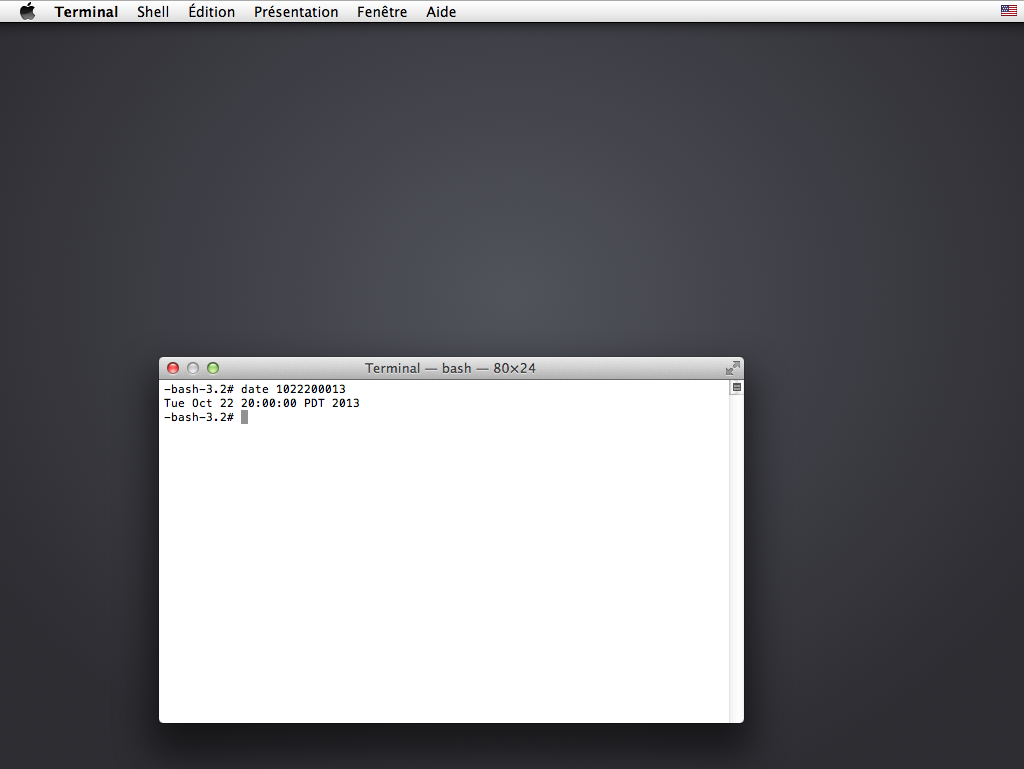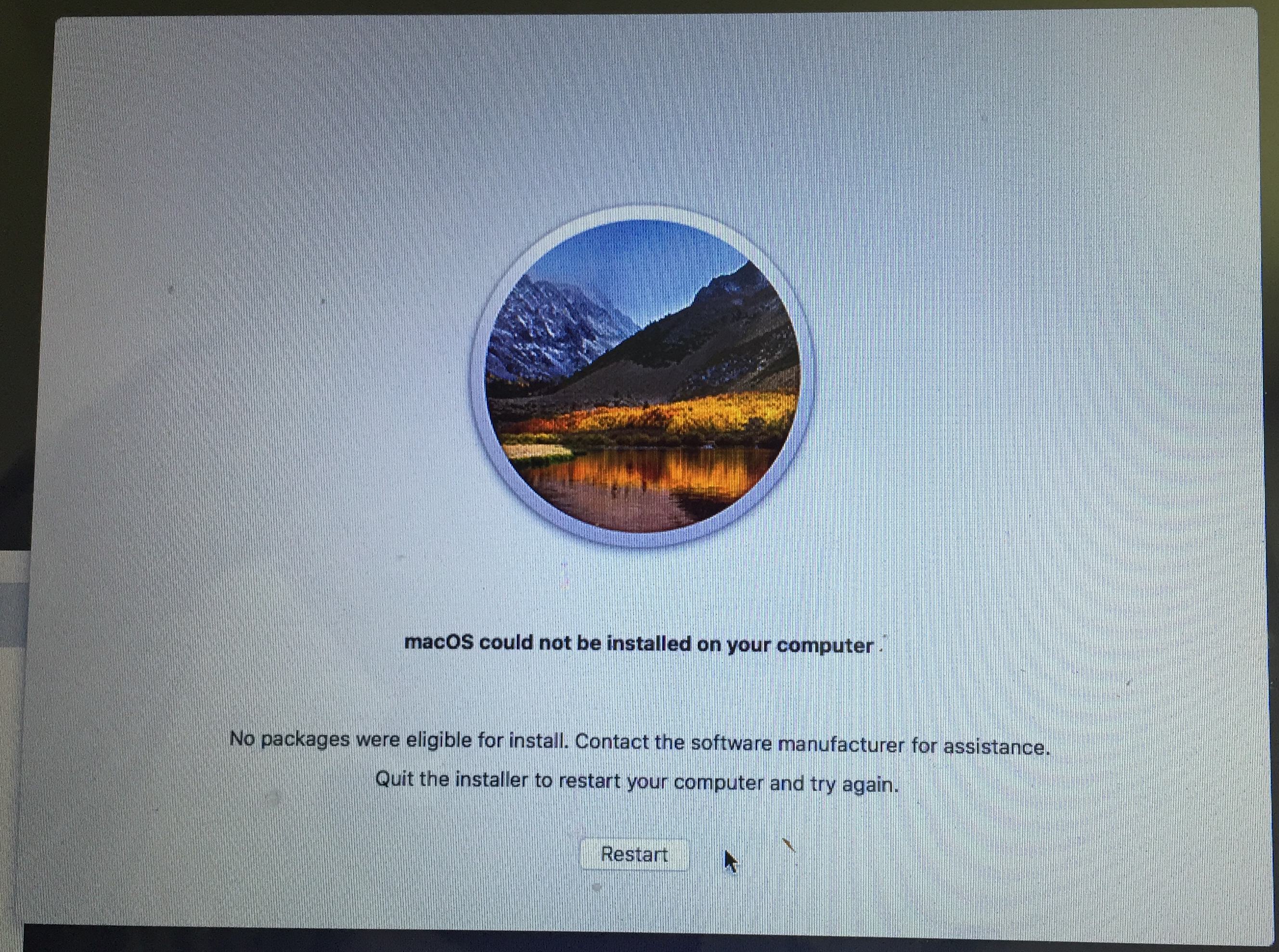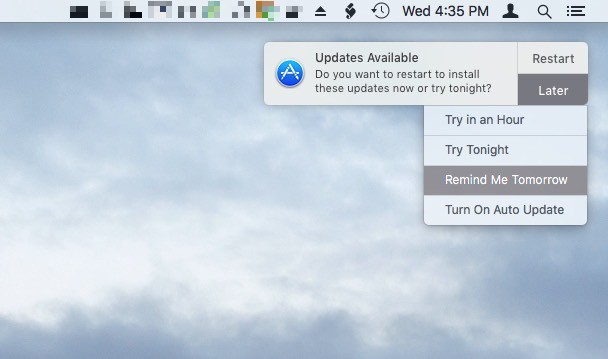To get the latest features and maintain the security, stability, compatibility, and performance of your Mac, it's important to keep your software up to date. Apple recommends that you always use the latest macOS that is compatible with your Mac.
I was trying to install OSX Yosemite on an older mac for a friend but got this message over and over even after changing it to the correct date 4/12/18. Then I changed the year to 2014 and then it worked. It needed to have the date range for Yosemite not the current date. So frustrating thanks for the tips. Jan 03, 2016 When that message appears, go under disk utilities, click 'terminal,' and once that pops up, type 'date' and hit enter. The date will probably appear as incorrect (mine was set at the year 2000). Type date again and then type in the correct date in the format MMDDHHYYYY (month, day, hour, year) and hit enter. Then try installing again. Once you’ve done that, here’s how to install, reinstall, or upgrade to El Capitan, step by step: Boot from your Recovery HD partition by restarting your Mac while holding down the Command+R keys. The OS X Utilities window appears. Select Reinstall OS X, and click Continue. The OS X El Capitan splash screen appears. OS X El Capitan won't install on these two MacBook Pros (8,1). Let's find out!Support the show and get in the credits http://Patreon.com/KrazyKenWant. Apple released the first update for OS X El Capitan on October 21, 2015 (conveniently on the same day Surface Book and Surface Pro 4 reviews went up). Officially bring up the OS X up to version 10.
Learn how to upgrade to macOS Big Sur, the latest version of macOS.
Check compatibility
The version of macOS that came with your Mac is the earliest version it can use. For example, if your Mac came with macOS Big Sur, it will not accept installation of macOS Catalina or earlier.
If a macOS can't be used on your Mac, the App Store or installer will let you know. For example, it might say that it's not compatible with this device or is too old to be opened on this version of macOS. To confirm compatibility before downloading, check the minimum hardware requirements:
- macOS Catalina 10.15 hardware requirements
- macOS Mojave 10.14 hardware requirements
- macOS High Sierra 10.13 hardware requirements
- macOS Sierra 10.12 hardware requirements
- OS X El Capitan 10.11 hardware requirements
- OS X Yosemite 10.10 hardware requirements
El Capitan Install Usb
Download macOS using Safari on your Mac
Safari uses these links to find the old installers in the App Store. After downloading from the App Store, the installer opens automatically.
- macOS Catalina 10.15 can upgrade Mojave, High Sierra, Sierra, El Capitan, Yosemite, Mavericks
- macOS Mojave 10.14 can upgrade High Sierra, Sierra, El Capitan, Yosemite, Mavericks, Mountain Lion
- macOS High Sierra 10.13 can upgrade Sierra, El Capitan, Yosemite, Mavericks, Mountain Lion
Safari downloads the following older installers as a disk image named InstallOS.dmg or InstallMacOSX.dmg. Open the disk image, then open the .pkg installer inside the disk image. It installs an app named Install [Version Name]. Open that app from your Applications folder to begin installing the operating system.

- macOS Sierra 10.12 can upgrade El Capitan, Yosemite, Mavericks, Mountain Lion, or Lion
- OS X El Capitan 10.11 can upgrade Yosemite, Mavericks, Mountain Lion, Lion, or Snow Leopard
- OS X Yosemite 10.10can upgrade Mavericks, Mountain Lion, Lion, or Snow Leopard
How To Install OS X El Capitan on Mac.

El Capitan Install Change Date Terminal
1. Download Torrent, open the .dmg
2. Right-click the .app - 'Show Package Contents'
3. Open (mount) InstallESD.dmg, located along the path of 'Install OS X Yosemite.app / Contents / SharedSupport /'
4. From the contents of the OS X Install ESD open (mount) BaseSystem.dmg (default BaseSystem.dmg Basesystem.chunklist and hidden. Use the utility 'ShowAllFiles').
5. Run Disk Utility and expand BaseSystem.dmg on the flash drive formatted GUID (the 'Options') and Mac OS coffee (HFS +)
6. Copy the folder OS X Install ESD / Packages folder on the flash drive in the / System / Installation / replacing the file alias Packages.
6. Copy to the root of the stick and BaseSystem.dmg Basesystem.chunklist of Install ESD
If you do not - get an error Undefined error: 0 at the very beginning of the installation!
7. Backup
8. Reboot while holding down Alt. Choosing our stick. If necessary, after Disk Utility to erase partitions. We put the system.
9. Now you can install OS X El Capitan on your Macs.